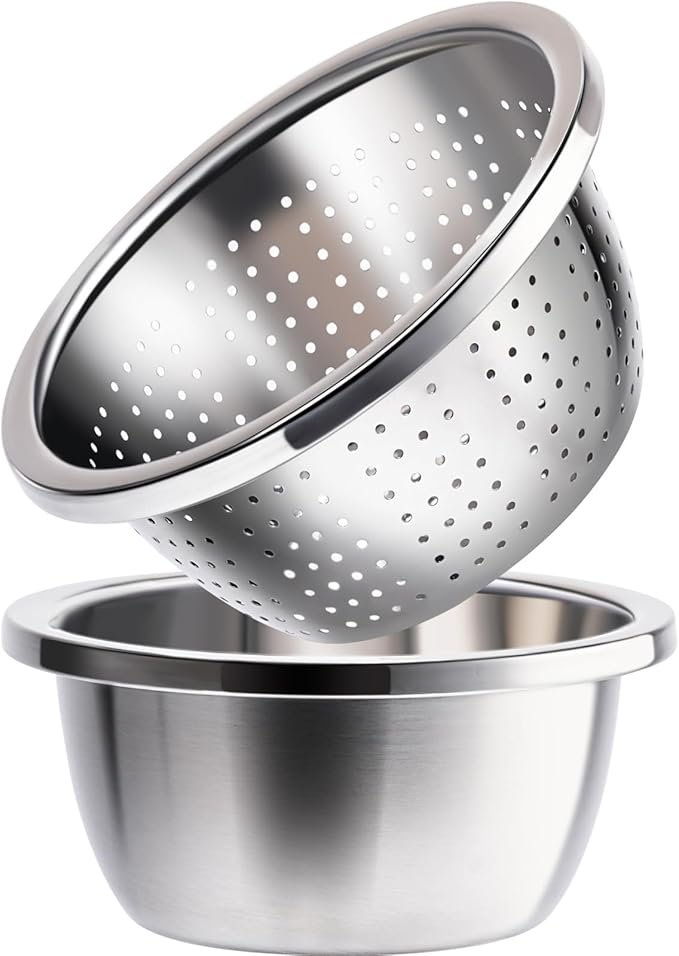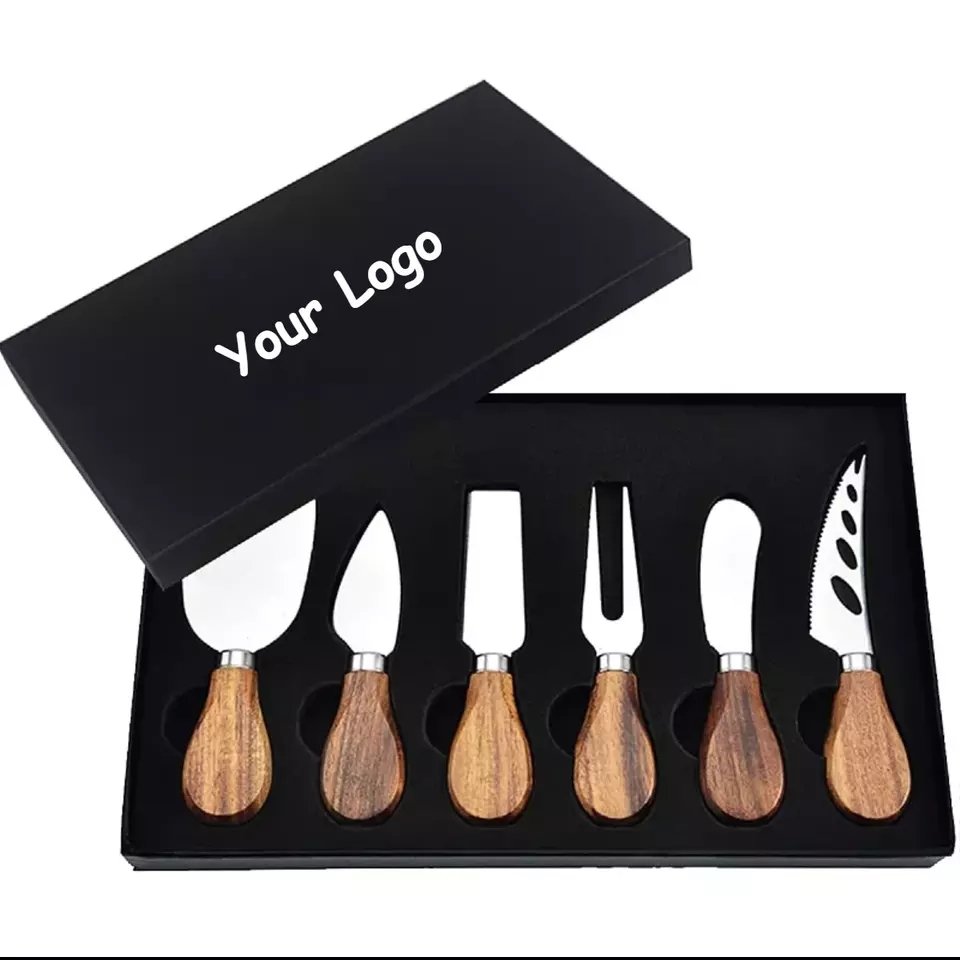Are you looking to optimize your kitchen’s efficiency? Commercial colanders are a must-have in every professional kitchen, offering convenience, durability, and speed for large-scale food preparation.
Commercial colanders are specially designed to handle high-volume food preparation, making them essential for catering, restaurants, and large kitchens. Their robust design ensures long-lasting performance under high demands.
If you want to learn why commercial colanders are crucial for your business, keep reading.
Table of Contents

What is a Commercial Colander?
A commercial colander is a large, durable kitchen tool designed for filtering and draining liquids from solids in bulk. Made of high-quality materials like stainless steel, these colanders are built to withstand the demands of professional kitchens.
Commercial colanders are larger, sturdier, and made from materials like stainless steel, designed to perform well in high-volume kitchens and restaurants. They are specifically made for efficiency and long-term use.
The key difference between commercial and regular colanders is their capacity and design. Commercial colanders are built to handle larger volumes, often used for draining large amounts of pasta, vegetables, or even washing fruits in food service. These colanders usually come with reinforced edges, larger perforations, and ergonomic handles for heavy-duty tasks. In contrast, regular colanders are often smaller and made of less durable materials, typically used in home kitchens.
How Are Commercial Colanders Different from Regular Colanders?
Commercial colanders are constructed with heavier materials, often stainless steel or other metals, designed to resist wear and tear. Regular home-use colanders are typically made from plastic or light metals and may not withstand the volume and intensity of professional kitchen operations.
Comparison of Commercial Colanders vs Regular Colanders
| Feature | Commercial Colander | Regular Colander |
|---|---|---|
| Material | Stainless Steel, Aluminum | Plastic, Light Metal |
| Size | Larger, High-Capacity | Smaller, Lower-Capacity |
| Durability | Heavy-duty, Long-lasting | Less durable, Limited use |
| Intended Use | High-Volume Food Prep | Home Cooking |
Why Are Commercial Colanders Essential in Restaurants and Catering?
In restaurants and catering businesses, time and efficiency are of the essence. Commercial colanders are vital for quickly and safely draining large quantities of food, ensuring fast service without compromising quality.
Commercial colanders are indispensable in professional kitchens. They allow for faster food preparation, with their ability to handle large portions, reducing time spent on tasks like draining pasta or vegetables.
Commercial colanders in restaurants aren’t just about the size—they’re about increasing kitchen efficiency. With larger perforations, they enable quicker draining of liquids, which is essential in fast-paced environments where every second counts. Moreover, these colanders are designed for hygiene and durability, with rust-resistant surfaces that can endure constant washing and exposure to harsh chemicals. The ability to quickly wash and drain ingredients while preventing contamination is one of the main reasons commercial colanders are essential in the food industry.
The Role of Commercial Colanders in High-Volume Cooking
When cooking for a crowd, like at catering events or in large-scale restaurant kitchens, the speed and effectiveness of your kitchen tools become crucial. Commercial colanders can process large batches of ingredients without slowing down food prep.
Table: Benefits of Commercial Colanders in Catering vs Regular Use
| Benefit | Catering/Restaurants | Regular Home Use |
|---|---|---|
| Speed of Use | Fast, High-Volume Draining | Slower, Smaller Batches |
| Durability | Heavy-duty, Long-Lasting | Less Durable |
| Hygiene and Maintenance | Easy to Clean, Rust-Resistant | May Corrode or Stain |
How to Choose the Right Commercial Colander for Your Business?
Choosing the right commercial colander involves considering factors like size, material, and purpose. Here’s how you can make the best decision for your kitchen.
The right commercial colander for your business depends on its specific use—whether for draining pasta, washing vegetables, or straining liquids. Choose the material and size that best suits your operations.
To select the right colander for your business, consider its primary use. For instance, if you’re draining large batches of pasta, you’ll need a colander with larger holes and a sturdy base. If you’re dealing with finer grains or ingredients like quinoa or rice, a mesh or china cap strainer might be more appropriate. Material also plays a role in durability; stainless steel colanders are generally the most durable and resistant to high temperatures while plastic ones are more lightweight and cost-effective for smaller operations.
Key Features to Look for in Commercial Colanders
Look for commercial colanders with ergonomic handles, reinforced edges, and rust-resistant materials. These features will ensure the colander withstands frequent use without compromising performance.
Table: Comparison of Material Types for Commercial Colanders
| Material | Strength | Ideal Use Case | Cost |
|---|---|---|---|
| Stainless Steel | High Durability | High-Volume Food Prep | High |
| Aluminum | Moderate Durability | Moderate-Volume Kitchens | Medium |
| Plastic | Lightweight | Small Kitchens | Low |
Maintaining Commercial Colanders for Longevity and Hygiene
Proper maintenance is essential for the longevity of your commercial colanders. Here are some tips for ensuring they remain in good condition.
Cleaning and storing your commercial colanders correctly can extend their lifespan, keeping them functional and hygienic for years to come.
Proper cleaning involves removing all food residue after each use and thoroughly washing the colanders with hot, soapy water. Stainless steel colanders should be dried immediately to prevent rusting while plastic ones require care to avoid scratches and stains. Additionally, always store your colanders in a dry, well-ventilated area to avoid contamination and maintain cleanliness. In high-volume kitchens, it’s essential to regularly inspect the colanders for any signs of wear or damage to ensure they’re always safe for food use.
Cleaning and Storing Commercial Colanders Properly
Ensure that your colanders are thoroughly dried to prevent rusting (for metal ones) and contamination. Store them in a dry area to avoid any issues with bacteria buildup.
Table: Best Practices for Cleaning Commercial Colanders by Material
| Material | Cleaning Tips | Maintenance Frequency |
|---|---|---|
| Stainless Steel | Wash with soap and water; dry immediately | After every use |
| Plastic | Wash and air dry; avoid abrasive scrubbers | Weekly checks |
| Aluminum | Wash gently; avoid acidic cleaners | After each use |
What Do Americans Call a Colander?
In the United States, the term “colander” is widely used; however, is it the only name for this kitchen tool?
While “colander” is the most common term in the U.S., it’s sometimes also referred to as a “strainer” in everyday conversation—especially when it comes to fine-mesh versions.
Americans tend to use the term “colander” in kitchens for a tool used to drain or strain food; however it’s also referred to as a “strainer” in some cases. While both terms can describe a similar function, a colander generally refers to a larger perforated bowl for draining larger volumes of food while a strainer is often used for finer tasks like straining liquids or fine ingredients.
Regional Differences in Colander Terminology
The terminology for colanders can differ across regions in the U.S., with some areas using “strainer” for colanders with fine mesh or more delicate structures.
Table: Colander Terminology Around the World
| Country | Common Term | Alternate Term |
|---|---|---|
| United States | Colander | Strainer |
| United Kingdom | Colander | Sieve |
| Canada | Colander | Strainer |





